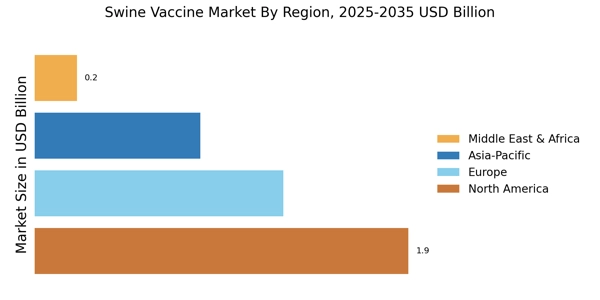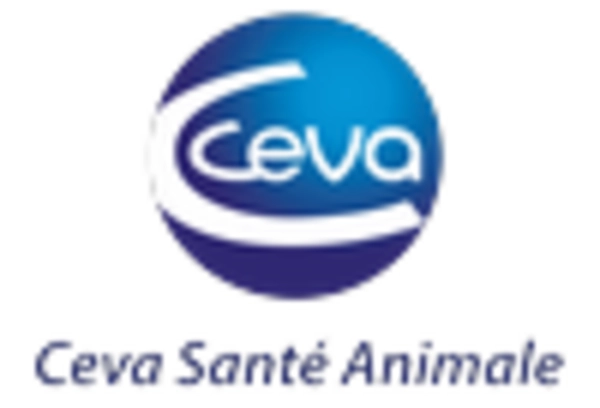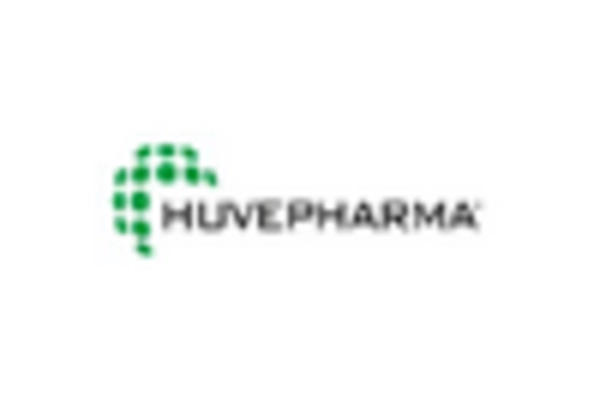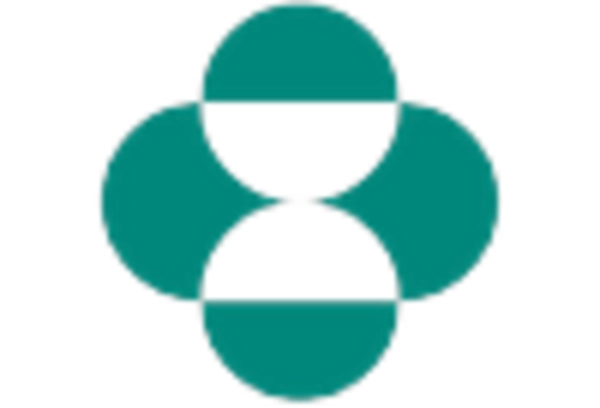Emergence of New Swine Diseases
The emergence of new and re-emerging diseases in swine populations is a significant factor influencing the Swine Vaccine Market. Diseases such as African Swine Fever (ASF) and Porcine Epidemic Diarrhea (PED) have posed severe threats to swine health and production. The economic impact of these diseases can be devastating, leading to substantial losses in the pork industry. As a result, there is an urgent need for innovative vaccines to combat these threats. The Swine Vaccine Market is responding to this challenge by investing in research and development to create effective vaccines that can provide immunity against these emerging pathogens. This focus on disease prevention is expected to drive market growth as producers prioritize herd health and biosecurity.
Rising Demand for Pork Products
The increasing The Swine Vaccine Industry. As populations grow and dietary preferences shift towards protein-rich foods, pork remains a staple in many diets. This trend has led to a surge in pig farming, necessitating effective vaccination strategies to ensure herd health and productivity. According to recent data, pork consumption is projected to rise by approximately 2.5% annually, which in turn fuels the need for vaccines that can prevent diseases such as Porcine Reproductive and Respiratory Syndrome (PRRS) and Swine Influenza. Consequently, the Swine Vaccine Market is likely to experience robust growth as producers seek to enhance their biosecurity measures and maintain high production levels.
Advancements in Vaccine Technology
Technological advancements in vaccine development are transforming the Swine Vaccine Market. Innovations such as recombinant vaccines, DNA vaccines, and adjuvant technologies are enhancing the efficacy and safety of swine vaccines. These advancements allow for more targeted immune responses and reduced side effects, which are crucial for maintaining herd health. Furthermore, the integration of biotechnology in vaccine production is streamlining the manufacturing process, potentially lowering costs and increasing availability. As producers become more aware of the benefits of these advanced vaccines, the Swine Vaccine Market is likely to expand, driven by the demand for more effective and efficient vaccination solutions.
Increased Awareness of Animal Health
The growing awareness of animal health and welfare among producers and consumers is driving the Swine Vaccine Market. Stakeholders are increasingly recognizing the importance of vaccination in preventing disease outbreaks and ensuring the sustainability of pig farming. This heightened awareness is leading to greater investment in biosecurity measures and vaccination programs. Additionally, consumers are becoming more concerned about the quality and safety of pork products, prompting producers to adopt best practices in animal health management. Consequently, the Swine Vaccine Market is likely to see increased demand for vaccines that not only protect animal health but also align with consumer expectations for safe and responsibly produced food.
Regulatory Support for Vaccine Development
Regulatory support for vaccine development plays a crucial role in shaping the Swine Vaccine Market. Governments and regulatory bodies are increasingly recognizing the importance of vaccination in maintaining animal health and food safety. Initiatives aimed at expediting the approval process for new vaccines are encouraging investment in research and development. This supportive regulatory environment is likely to foster innovation and facilitate the introduction of novel vaccines into the market. As a result, the Swine Vaccine Market is expected to benefit from a more diverse range of vaccine options, ultimately enhancing disease control measures and improving overall herd health.


















Leave a Comment